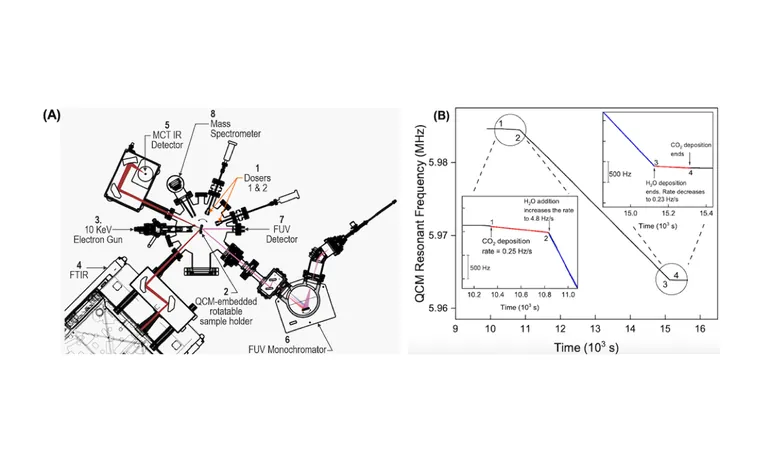
Unraveling the Mysterious H2O2 Distribution on Europa's Icy Terrain
2025-06-23
Author: Li
New Discoveries about Europa's Chemistry
Recent observations of Europa, one of Jupiter's most fascinating moons, have revealed surprising levels of hydrogen peroxide (H2O2) in its warmer equatorial zones. These areas, characterized by chaotic terrain, show concentrations of H2O2 that starkly contrast with the lower levels found in the polar regions.
A Twist in Expected Radiolysis Effects
This unexpected distribution challenges previous laboratory findings, which suggested that colder temperatures would yield higher H2O2 production from pure water ice through a process known as radiolysis. Notably, the regions exhibiting increased H2O2, specifically the Tara and Powys Regiones, are also rich in carbon dioxide (CO2), potentially indicating a connection to subsurface processes within Europa.
The Role of CO2 in Producing H2O2
To explore the influence of CO2 on H2O2 production, researchers conducted experiments by irradiating water ice mixed with varying CO2 levels at temperatures of 70 and 100 K. Remarkably, even small amounts of CO2 (less than 3%) significantly boosted H2O2 yields, suggesting that CO2 plays a vital role in enhancing the chemical processes at work in Europa's icy crust.
Implications for Other Icy Moons
These groundbreaking findings not only clarify the puzzling H2O2 distribution on Europa but also carry important implications for our understanding of other icy bodies in the solar system, such as Ganymede and Charon, where CO2 and H2O2 have also been detected together.
What This Means for Astrobiology
As researchers continue to decode the complex chemistry of Europa, these insights offer valuable clues about the potential for life beyond Earth. The presence of H2O2 and its interaction with CO2 could be crucial in understanding the chemical pathways that might support biological processes in the vast oceans beneath Europa's icy surface.






 Brasil (PT)
Brasil (PT)
 Canada (EN)
Canada (EN)
 Chile (ES)
Chile (ES)
 Česko (CS)
Česko (CS)
 대한민국 (KO)
대한민국 (KO)
 España (ES)
España (ES)
 France (FR)
France (FR)
 Hong Kong (EN)
Hong Kong (EN)
 Italia (IT)
Italia (IT)
 日本 (JA)
日本 (JA)
 Magyarország (HU)
Magyarország (HU)
 Norge (NO)
Norge (NO)
 Polska (PL)
Polska (PL)
 Schweiz (DE)
Schweiz (DE)
 Singapore (EN)
Singapore (EN)
 Sverige (SV)
Sverige (SV)
 Suomi (FI)
Suomi (FI)
 Türkiye (TR)
Türkiye (TR)
 الإمارات العربية المتحدة (AR)
الإمارات العربية المتحدة (AR)